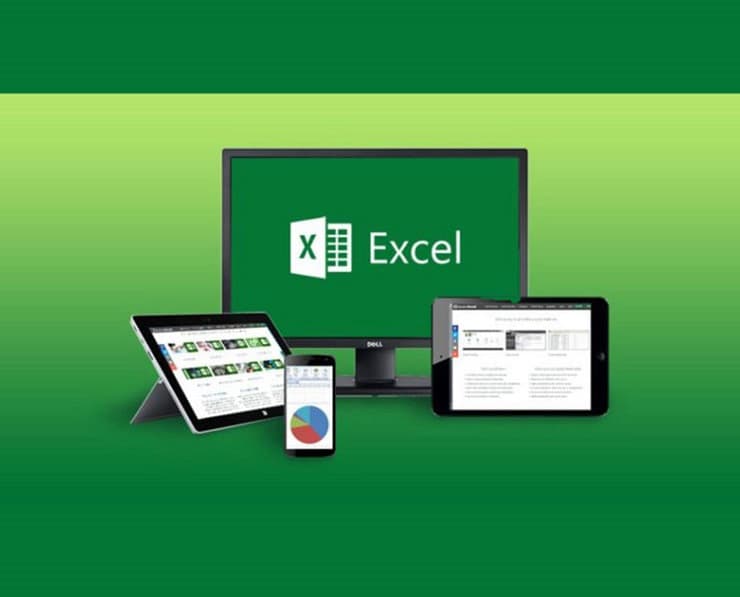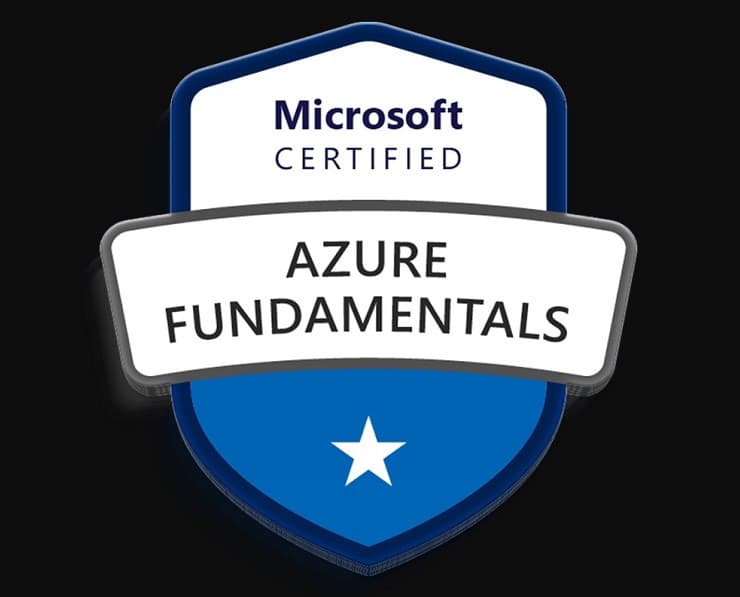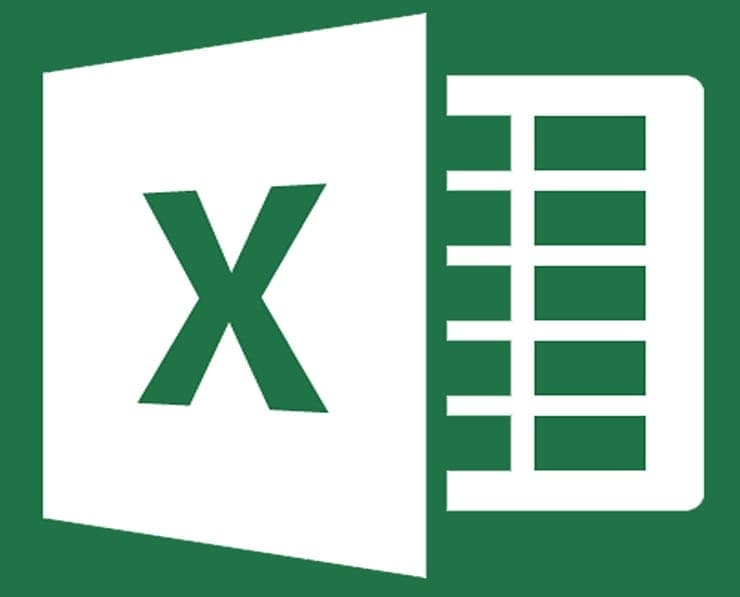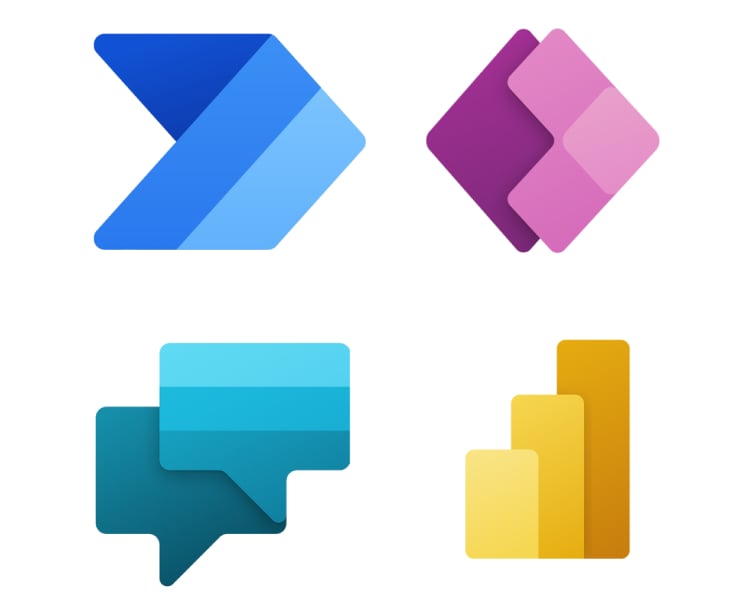Student Feedback
MO-200: Microsoft Excel (Excel and Excel 2019) Certification Video Training Course Outline
Introduction
Level 1, Section 1 - An introduc...
Level 1, Section 2 - Create work...
Level 1, Section 3 - Configure w...
Level 1, Section 4 - Basic formulas
Level 2, Section 1 - Navigate th...
Level 2, Section 2 - Format work...
Level 2, Section 3 - Customise o...
Level 2, Section 4 - Configure E...
Level 2, Section 5- Utilise cell...
Level 3, Section 1 - Insert data...
Level 3, Section 2 - Format cell...
Level 3, Section 3 - Highlight a...
Level 3, Section 4 - Summarise d...
Level 4, Section 1 - Create a table
Level 4, Section 2 - Modify a table
Level 4, Section 3 - Filtering, ...
Level 4, Section 4 - Utilise con...
Level 5, Section 1 - Create a ch...
Level 5, Section 2 - Format a ch...
Level 5, Section 3 - Insert and ...
Level 5, Section 4 - create and ...
Level 5, Section 5 - Format and ...
Introduction
MO-200: Microsoft Excel (Excel and Excel 2019) Certification Video Training Course Info
Become a Microsoft Excel Associate: MO-200 Certification Online Course
Develop Excel 2019 skills with guided activities and hands-on tutorials, plus a practice test to prepare for the exam.
What you will learn from this course
• Master Microsoft Excel 2019 and Excel 365 skills required for the MO-200 Associate Certification Exam
• Confidently manage and organize worksheets and workbooks
• Apply advanced formatting techniques to enhance worksheets
• Create and customize charts and insert images for effective data visualization
• Use Excel formulas and functions to perform calculations and data analysis
• Create, manage, and format Excel tables for structured data
• Gain practical skills to complete tasks efficiently and accurately under exam conditions
• Access and complete a mock practice test to evaluate readiness for the MO-200 exam
Learning Objectives
The main objective of this course is to provide students with a complete understanding of Excel 2019 or Excel 365 tools and features that are essential for the MO-200 Associate Certification Exam. By the end of this course, students will:
• Develop the ability to navigate Excel workbooks and worksheets with ease
• Apply formatting options to improve the readability and presentation of data
• Create and manipulate charts, images, and other visual elements to enhance reports
• Use basic and advanced formulas and functions to solve real-world problems
• Organize data into Excel tables, applying appropriate formatting and filtering
• Build confidence in their skills through hands-on exercises and practice exams
• Learn techniques to efficiently manage time during the exam by focusing on high-priority tasks
This course is designed not only to teach the technical skills but also to improve efficiency and problem-solving capabilities while working in Excel. It focuses on real exam scenarios to ensure learners can confidently handle the types of tasks they will encounter in the MO-200 exam.
Target Audience
This course is suitable for a wide range of learners, including:
• Students preparing for the MO-200 Microsoft Excel 2019 or Excel 365 Associate Certification Exam
• Office professionals seeking to improve their Excel skills for career advancement
• Data analysts and administrative staff who frequently work with Excel spreadsheets
• Professionals transitioning to roles that require advanced Excel knowledge
• Anyone interested in enhancing productivity and efficiency in Excel 2019 or Excel 365
The course is structured to support learners at different levels. Beginners will gain a strong foundational understanding of Excel, while intermediate and advanced users will refine their skills to meet certification standards. The content is relevant for both academic and professional applications, ensuring practical knowledge that can be applied immediately.
Requirements
To get the most out of this course, students should have access to:
• Microsoft Excel 2019 or Microsoft Excel 365 installed on a desktop or laptop
• A computer with sufficient processing power to run Excel efficiently
• Basic understanding of computer operations, including file management and software navigation
• Internet access for downloading practice exercises and additional course resources
No specialized software or prior programming experience is required. This course is designed to make learning Excel accessible, practical, and directly aligned with the certification exam objectives. Students will progressively build their skills through guided tutorials and practical exercises.
Prerequisites
There are no strict prerequisites for this course, making it suitable for beginners and professionals alike. However, it is beneficial for students to have:
• Familiarity with basic computer concepts, such as creating, saving, and managing files
• Awareness of Microsoft Office tools, especially Word and PowerPoint, which share some interface features with Excel
• A willingness to practice and apply new skills consistently, as hands-on practice is key to mastering Excel
Students who meet these basic prerequisites will find the course straightforward and highly effective. The structure of the course ensures that all learners progress from fundamental concepts to advanced techniques in a step-by-step manner, preparing them thoroughly for the MO-200 exam.
Managing Workbooks and Worksheets
A core aspect of the MO-200 exam is understanding how to efficiently manage Excel workbooks and worksheets. Students will learn how to create new workbooks, navigate multiple worksheets, and manage worksheet tabs effectively. Techniques for renaming, moving, copying, and deleting worksheets will be covered, along with strategies for organizing large sets of data across multiple sheets.
Workbook management also includes saving files in different formats, understanding version control, and protecting workbooks with passwords to maintain data integrity. Students will explore how to set up templates for repeated tasks, allowing for faster and more consistent work. Understanding these skills is essential not only for the exam but also for real-world professional applications where efficient workbook management is critical.
Formatting Worksheets
Formatting is another major component of the MO-200 exam. Students will learn to apply styles and themes, adjust row and column sizes, and use conditional formatting to highlight important data. Proper formatting improves readability, enhances the visual appeal of worksheets, and ensures that data is presented clearly for reports and presentations.
Additional topics include cell alignment, font customization, number formatting, and applying borders and fills. Advanced formatting techniques such as grouping, hiding rows and columns, and using freeze panes to maintain visibility of key data will also be covered. Mastery of these skills ensures that learners can create professional-quality worksheets that meet both exam requirements and workplace standards.
Working with Charts and Images
Visual representation of data is a critical Excel skill. This course will guide students through creating, customizing, and formatting various types of charts, including column, line, pie, and bar charts. Students will also learn how to add images and shapes to worksheets and modify them to complement charts and data.
Emphasis will be placed on selecting the appropriate chart type for different datasets and customizing chart elements such as titles, legends, and axes. By the end of this section, students will be able to effectively combine charts, images, and other visual elements to present data in a professional and easily understandable format.
Using Formulas and Functions
A significant portion of the MO-200 exam focuses on formulas and functions. Students will learn how to write basic formulas, use mathematical and logical functions, and apply data analysis tools such as SUM, AVERAGE, IF, VLOOKUP, and more. Understanding how to troubleshoot errors, use cell references effectively, and create dynamic formulas is essential for exam success.
Students will also explore practical examples of formulas in real-world scenarios, learning how to combine functions to perform complex calculations efficiently. This section emphasizes accuracy, efficiency, and the ability to solve problems quickly, which is critical for both the certification exam and workplace tasks.
Excel Tables
Creating and managing Excel tables is another key area for the MO-200 exam. Students will learn how to convert ranges into structured tables, apply table styles, and use table features such as filtering, sorting, and structured references. Working with tables allows for better data organization, easier analysis, and improved workflow management.
Advanced table techniques include using calculated columns, creating summary reports, and linking tables to other worksheets for comprehensive data management. Mastery of Excel tables ensures that students can handle both simple and complex datasets effectively.
Practice Test
To reinforce learning and evaluate readiness for the MO-200 exam, students will be provided with a downloadable practice test. This test simulates real exam conditions, allowing students to assess their knowledge, identify areas for improvement, and gain confidence in their skills. Completing the practice test helps students solidify their understanding of all topics and ensures they are well-prepared for the certification exam.
Course Modules / Sections
This MO-200 Microsoft Excel 365/2019 Associate Certification course is divided into several comprehensive modules designed to guide learners from foundational skills to advanced Excel functionalities, ensuring full readiness for the certification exam. Each module is carefully structured to cover exam-relevant topics, provide hands-on experience, and reinforce learning through practical exercises.
The first module focuses on introduction and Excel environment navigation. Students will learn the layout of Excel, including the ribbon, quick access toolbar, workbook views, and backstage options. Familiarity with the Excel interface is crucial for performing tasks efficiently during the exam and for professional usage in real-world scenarios.
The second module covers workbook and worksheet management. Students will explore techniques for creating, saving, opening, and closing workbooks. They will learn to manage multiple worksheets within a workbook, including renaming, moving, copying, hiding, and deleting sheets. Additional skills include protecting workbooks and worksheets, setting up templates, and organizing large datasets across multiple worksheets effectively.
The third module focuses on formatting worksheets. This section emphasizes visual presentation and readability. Learners will apply font styles, sizes, and colors, adjust row heights and column widths, apply number formatting, and implement conditional formatting rules. Techniques for aligning and merging cells, using borders and fills, and applying cell styles and themes will also be taught. Mastery of formatting ensures data is easy to interpret and professionally presented.
The fourth module delves into formulas and functions. Students will start with basic arithmetic operations and then progress to more advanced functions such as logical, lookup, and reference functions. Emphasis is placed on constructing accurate formulas, using relative and absolute references, troubleshooting errors, and combining multiple functions for complex calculations. This module also introduces array formulas and dynamic calculations, preparing students for scenarios frequently encountered on the MO-200 exam.
The fifth module covers charts and visualizations. Students will learn to create, customize, and modify charts, including column, bar, line, pie, and scatter charts. The module teaches how to add and format chart elements such as titles, axes, legends, and data labels. Inserting and managing images, shapes, and SmartArt diagrams is included, along with tips for combining visual elements to present data effectively.
The sixth module emphasizes data management using tables and lists. Learners will convert data ranges into structured tables, apply table styles, and use table features such as sorting, filtering, and calculated columns. Additional skills include linking tables, summarizing data with totals, and maintaining structured references for efficient formula usage.
The final module focuses on review and practice exams. Students will complete exercises designed to mimic the format of the MO-200 exam, testing their knowledge, speed, and accuracy. This hands-on approach reinforces all previously covered skills, identifies areas needing improvement, and builds confidence for the certification exam.
Key Topics Covered
This course covers a wide range of topics that are directly aligned with the MO-200 Microsoft Excel 365/2019 Associate Certification Exam objectives. Students will gain practical knowledge and exam-ready skills across all major areas of Excel.
Workbook and worksheet management includes creating new workbooks, opening and saving files in multiple formats, navigating between worksheets, and organizing data across multiple sheets. Learners will also understand how to protect worksheets, restrict editing, and use templates to streamline repetitive tasks. These skills are essential for efficient data management both in the exam and in professional environments.
Formatting topics cover advanced techniques to enhance worksheet presentation. Students will learn font customization, cell alignment, conditional formatting, applying number formats, using borders and fills, and merging cells. They will also explore workbook themes and styles, ensuring consistency and professional appearance throughout their documents. Mastery of formatting improves clarity, facilitates data analysis, and demonstrates professionalism in reports and presentations.
Formula and function coverage is extensive, including basic arithmetic operations, logical functions like IF, comparison functions, lookup functions such as VLOOKUP and HLOOKUP, text functions, date and time functions, and reference functions. Students will also learn to combine functions, troubleshoot errors, and implement formulas across ranges and tables. Emphasis is placed on understanding formula structure, ensuring accuracy, and applying dynamic references for real-world problem solving.
Charts and visualization topics include creating various chart types, modifying chart properties, formatting chart elements, and inserting images, shapes, and SmartArt diagrams. Learners will understand how to present data visually to enhance comprehension and support decision-making processes. They will also learn best practices for combining multiple charts and images to create dashboards or reports suitable for professional presentations.
Data management and table topics cover converting ranges into structured tables, applying table styles, sorting and filtering data, using calculated columns, linking tables across worksheets, and creating summaries with totals. Students will also explore structured references, which simplify formula creation and ensure accuracy when working with large datasets. These skills are critical for organizing, analyzing, and presenting data efficiently.
Additional topics include best practices for using Excel efficiently, such as keyboard shortcuts, data validation techniques, working with named ranges, and using the freeze panes, split, and grouping features to manage large worksheets. The course also covers tips for navigating the Excel interface, customizing ribbons, and utilizing quick access tools to improve productivity.
Finally, the course emphasizes practical exercises and exam-style practice tests. Learners will engage with tasks designed to simulate real exam conditions, focusing on speed, accuracy, and application of skills across multiple scenarios. These exercises reinforce learning, highlight areas for improvement, and build the confidence needed to succeed in the MO-200 certification exam.
Teaching Methodology
The teaching methodology of this course is designed to provide an engaging, hands-on, and exam-focused learning experience. It combines step-by-step tutorials, practical exercises, demonstrations, and real-world examples to ensure learners develop both theoretical understanding and practical expertise.
The course begins with clear explanations of concepts, followed by demonstrations using actual Excel 2019 and Excel 365 interfaces. Each topic is broken down into manageable sections, allowing students to practice immediately after learning new skills. This approach helps reinforce understanding, promotes retention, and ensures that learners are comfortable applying skills independently.
Interactive exercises and guided practice tasks are included throughout the course. These activities simulate real-life scenarios, requiring learners to manage workbooks, format data, apply formulas, create charts, and organize tables. Hands-on practice ensures that students gain the experience needed to handle similar tasks during the certification exam.
Visual aids such as step-by-step screenshots, screen recordings, and annotated examples enhance learning. Students are encouraged to follow along in their own Excel environment to reinforce skills. This immersive approach ensures that learners not only understand the concepts but also know how to apply them in real-world situations.
Regular progress checks are embedded in the course to monitor understanding and provide feedback. Students can revisit topics as needed and practice specific skills until mastery is achieved. The methodology emphasizes self-paced learning while ensuring alignment with the MO-200 exam objectives.
To further support learning, downloadable practice exercises, templates, and sample files are provided. These resources allow students to continue practicing outside of structured lessons and reinforce concepts covered in the course. The combination of guided instruction, hands-on practice, and self-directed exercises creates a comprehensive learning experience.
Assessment & Evaluation
Assessment and evaluation are integral to this course, ensuring students can track their progress and confirm readiness for the MO-200 Microsoft Excel Associate Certification Exam. The evaluation process combines practical exercises, quizzes, and full-length practice tests designed to simulate real exam conditions.
Practical exercises are provided after each module, requiring students to apply the skills learned to complete tasks such as managing worksheets, formatting data, using formulas, creating charts, and organizing tables. These exercises focus on accuracy, efficiency, and proper application of Excel features. Completing these tasks allows learners to reinforce skills and identify areas that may require additional practice.
Quizzes are included to test understanding of key concepts. Each quiz covers multiple-choice and scenario-based questions aligned with MO-200 exam objectives. Quizzes provide immediate feedback, helping students understand mistakes, clarify concepts, and improve knowledge retention.
The course also includes full-length practice tests that mimic the structure and content of the official MO-200 exam. These practice tests assess the learner’s ability to complete tasks within time constraints, manage multiple worksheets, apply formulas and functions, format data professionally, and create charts and tables effectively. Performance on practice tests provides a clear indication of exam readiness and highlights topics that may need further review.
Students are encouraged to review feedback, repeat exercises, and retake practice tests to ensure mastery of all skills. The assessment process is designed to build confidence, improve performance under exam conditions, and ensure students are fully prepared to pass the MO-200 Microsoft Excel Associate Certification Exam on their first attempt.
Benefits of the Course
This Microsoft Excel 365/2019 MO-200 Associate Certification course offers a wide range of benefits for students, professionals, and anyone seeking to advance their Excel skills. By the end of the course, learners will have gained practical knowledge, exam-ready skills, and the confidence to pass the MO-200 certification exam.
One of the key benefits is gaining proficiency in managing workbooks and worksheets. Students will learn to navigate Excel efficiently, organize data across multiple sheets, and utilize features such as templates and workbook protection. These skills are essential not only for the exam but also for professional tasks that require managing large datasets effectively.
Another significant benefit is mastering formatting techniques to improve the readability and presentation of data. Learners will be able to apply cell styles, conditional formatting, and themes to make data visually appealing and easy to interpret. This skill is highly valued in workplace scenarios where data presentation impacts decision-making.
The course also provides in-depth knowledge of Excel formulas and functions, which are critical for calculations, data analysis, and problem-solving. Students will become adept at using basic and advanced formulas, combining multiple functions, and troubleshooting errors. These capabilities enhance productivity and ensure accurate data processing in professional contexts.
Visualizing data using charts, images, and SmartArt is another major advantage of this course. Learners will gain the ability to create charts that communicate information clearly, insert and format images, and design dashboards that provide insights at a glance. This competency is particularly valuable for reports, presentations, and professional documentation.
Working with Excel tables and lists is a further benefit. Students will learn to structure data efficiently, sort and filter information, and use calculated columns to streamline analysis. Mastery of tables enables effective data management and reduces the likelihood of errors when handling complex datasets.
An additional benefit is exam preparedness. The course provides practice exercises and downloadable mock tests that simulate real MO-200 exam conditions. This hands-on approach allows students to assess their readiness, identify areas for improvement, and gain the confidence needed to pass the certification exam on the first attempt.
Finally, the course helps improve overall efficiency and productivity. By learning Excel shortcuts, effective navigation techniques, and best practices, students will be able to complete tasks faster, reduce errors, and enhance their overall performance in academic and professional settings.
Course Duration
The MO-200 Microsoft Excel 365/2019 Associate Certification course is designed to provide comprehensive training while allowing flexibility for learners. The total duration of the course is approximately 30 to 35 hours of focused instruction, practice exercises, and exam preparation activities.
The course is divided into structured modules that allow students to progress at their own pace. Each module is carefully timed to ensure that learners have sufficient time to understand the concepts, practice skills, and complete exercises without feeling rushed. On average, learners can expect to spend 2 to 3 hours per module, depending on prior experience with Excel.
Practical exercises are integrated throughout the course, allowing students to immediately apply what they have learned. These exercises may take additional time, ranging from 30 minutes to 1 hour per activity, depending on complexity. Completing these exercises is essential for reinforcing skills and building confidence in real-world applications.
The course also includes downloadable practice tests designed to simulate the MO-200 exam. Each practice test takes approximately 1 to 2 hours to complete under exam conditions. Students are encouraged to repeat these tests as needed to assess progress and ensure readiness for the actual certification exam.
Flexibility is a core feature of this course. Learners can choose to complete the course over a few weeks or extend it over several months, depending on their schedule and learning preferences. The self-paced structure ensures that all students, regardless of prior experience or time constraints, can successfully complete the course and gain the skills required for certification.
Tools & Resources Required
To successfully complete this MO-200 Excel course, students need access to certain tools and resources. The primary requirement is a computer with Microsoft Excel 2019 or Microsoft Excel 365 installed. Both versions provide the features and interface necessary to follow along with the course materials and practice exercises.
A computer with adequate processing power, memory, and storage is recommended to ensure smooth operation while working with large Excel workbooks, charts, and tables. While the course can be completed on laptops, desktops are preferred for extended practice sessions due to larger screen size and enhanced navigation capabilities.
Students should also have internet access for downloading course materials, practice exercises, and any additional resources provided. Internet access allows learners to update their Excel software, access online support if needed, and download templates or mock tests included in the course.
Additional tools include basic office peripherals such as a keyboard and mouse. Familiarity with keyboard shortcuts is recommended to improve efficiency and navigate Excel more effectively. Students are encouraged to practice using shortcuts for formatting, navigation, and formula entry, as these are frequently used during the MO-200 exam.
Course resources include downloadable practice files, templates, and exercises that accompany each module. These resources provide hands-on practice opportunities, enabling students to apply skills in real-world scenarios. Using these files regularly helps reinforce concepts, build accuracy, and prepare for timed tasks in the certification exam.
Students may also benefit from online forums, tutorials, and Excel reference guides. While not mandatory, these supplementary resources provide additional explanations, tips, and examples that enhance learning and help clarify complex topics. Engaging with these resources ensures a deeper understanding of Excel features and functions.
Finally, a quiet, distraction-free study environment is highly recommended. Focused practice is essential for mastering Excel skills, completing exercises efficiently, and performing well on practice tests. By maintaining a structured study routine and using the required tools and resources, students can maximize the benefits of the course and achieve MO-200 certification successfully.
Career Opportunities
Completing the MO-200 Microsoft Excel 365/2019 Associate Certification course opens a wide range of career opportunities across industries. Excel is one of the most widely used tools in business, finance, administration, and data management, and achieving certification demonstrates expertise that is highly valued by employers.
One of the primary career paths is administrative roles. Professionals in administrative positions use Excel for organizing data, generating reports, tracking schedules, and managing records. With certification, candidates demonstrate advanced skills in worksheet management, formatting, and data analysis, making them more competitive for roles such as administrative assistant, office manager, or executive assistant.
Data analysis is another key area where Excel skills are critical. Certified professionals are capable of handling large datasets, applying formulas and functions, creating charts, and producing summaries for decision-making. Roles such as data analyst, business analyst, and operations analyst benefit greatly from MO-200 certification, as employers rely on these professionals to transform raw data into actionable insights.
Accounting and finance positions also require strong Excel skills. Accountants, bookkeepers, financial analysts, and budget planners use Excel for financial modeling, creating financial statements, performing calculations, and analyzing trends. MO-200 certification equips learners with the technical abilities needed to perform these tasks efficiently and accurately, increasing career potential in finance departments, accounting firms, and corporate finance teams.
Project management and operations roles frequently depend on Excel to plan, track, and monitor projects. Certified individuals can create Gantt charts, manage timelines, calculate resources, and generate progress reports using advanced Excel features. Project coordinators, operations managers, and supply chain analysts benefit from these skills, as they enhance efficiency and improve overall workflow management.
Human resources professionals also leverage Excel to manage employee data, payroll, attendance records, and performance metrics. MO-200 certified skills enable HR personnel to create structured databases, analyze workforce trends, and generate professional reports that support strategic decisions. Certification enhances credibility and opens doors to HR analyst and HR specialist positions.
Small business owners and entrepreneurs can also benefit from Excel expertise. Managing inventory, tracking sales, analyzing performance metrics, and preparing financial reports all rely on effective Excel usage. MO-200 certification provides the confidence and technical knowledge needed to run a business efficiently, optimize processes, and make data-driven decisions.
Education and training is another sector where Excel skills are essential. Teachers, trainers, and educational administrators use Excel to manage student records, track performance, and prepare analytical reports. Certified individuals can design interactive spreadsheets, automate calculations, and present data clearly, supporting better decision-making in educational institutions.
Overall, MO-200 certification enhances employability, increases earning potential, and positions professionals for career growth. It demonstrates proficiency in essential Excel functions, practical data management skills, and the ability to apply knowledge in real-world scenarios, making certified candidates highly attractive to employers across various industries.
Conclusion
The MO-200 Microsoft Excel 365/2019 Associate Certification course is designed to provide a comprehensive, structured, and practical approach to mastering Excel. By completing this course, learners gain the skills and confidence required to excel in the MO-200 certification exam and apply their knowledge effectively in professional and academic environments.
Throughout the course, students learn to manage workbooks and worksheets efficiently, apply advanced formatting techniques, and create visually appealing charts and images. They also gain proficiency in formulas, functions, and data analysis techniques, enabling them to work with complex datasets accurately and efficiently. Mastery of Excel tables, structured data, and calculation features further enhances the learner’s ability to manage and organize information effectively.
The course offers a practical, hands-on learning experience through interactive exercises, guided practice, and downloadable mock exams. This approach ensures that learners not only understand the concepts but can also apply them in real-world scenarios, enhancing both their exam readiness and professional skill set. By following a structured progression from basic concepts to advanced Excel features, students develop a strong foundation and build confidence in their abilities.
Achieving MO-200 certification validates a student’s expertise in Excel and provides recognition of their skills in a globally recognized format. Certification demonstrates proficiency to employers, clients, and peers, opening doors to new job opportunities, promotions, and professional growth. It also ensures that learners are equipped with practical skills that can be applied immediately in their roles, improving efficiency, productivity, and accuracy in their work.
The course emphasizes practical application, time management, and efficiency, preparing students for the demands of both the certification exam and professional responsibilities. Students who complete this course gain a competitive edge in the job market, enhanced credibility, and the ability to leverage Excel as a powerful tool for data management, analysis, and presentation.
Enroll Today
Enrolling in the MO-200 Microsoft Excel 365/2019 Associate Certification course is the first step toward mastering Excel and advancing your career. The course is designed for learners of all levels, from beginners to professionals seeking to refine their skills and achieve certification.
By enrolling, students gain access to structured modules, hands-on exercises, practice tests, and practical examples that ensure exam readiness and skill mastery. The course provides flexibility for self-paced learning, allowing learners to progress according to their schedules while still covering all exam-relevant topics comprehensively.
Learners who enroll will benefit from a focused, practical approach that emphasizes real-world applications of Excel skills. The course equips students to handle tasks efficiently, analyze and visualize data effectively, and create professional-quality spreadsheets that meet both certification standards and workplace requirements.
Enrollment also provides access to essential resources, including downloadable practice files, templates, and mock exams. These resources enable continuous practice, reinforce learning, and help learners track their progress toward certification. The combination of structured instruction, practical exercises, and exam-focused preparation ensures that students are confident and prepared for the MO-200 Associate Certification Exam.
Completing this course not only prepares students for certification but also enhances career prospects, improves productivity, and provides the skills needed to succeed in a wide range of professional roles. Enroll today to gain mastery of Microsoft Excel 365/2019, achieve certification, and open the door to new career opportunities and professional growth.













